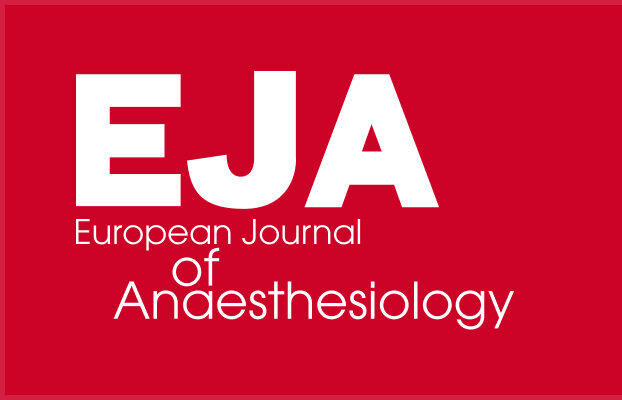About the
ESAIC
The Society is dedicated to supporting professionals in anaesthesiology and intensive care by serving as the hub for development and dissemination of valuable educational, scientific, research, and networking resources.

More about ESAIC
The European Society of Anaesthesiology and Intensive Care
The current European Society of Anaesthesiology and Intensive Care (ESAIC) started as European Society of Anaesthesiology (ESA) on 01 January 2005 after an amalgamation of three existing European Anaesthesiology Societies: the European Society of Anaesthesiologists (ESA), the European Academy of Anaesthesiology (EAA), and the Confederation of European National Societies of Anaesthesiologists (CENSA).
On 1 October 2020, the ESA officially became the European Society of Anaesthesiology and Intensive Care (ESAIC) and holds the most prominent position in the community of anaesthesiologists in Europe and elsewhere.
The Society is governed by a Board of Directors, a Council and the General Assembly. The General Assembly convenes at the time of the ESAIC’s European Anaesthesiology Congress.
The Society is comprised of the ESAIC Full or non-Full Members and Individual Society Members. Individual Society Members are represented within the ESAIC by the National Anaesthesiologists Societies Committee (NASC) which is represented on the Board of Directors.
ESAIC is a member of Alliance for Biomedical Research in Europe (BioMed Alliance). BioMed Alliance is committed to promoting excellence in European biomedical research and innovation with the goal of improving the health and well-being of all European citizens. The BioMed Alliance Code of Conduct sets out core principles to maintain and enhance professional independence, objectivity and scientific integrity.
ESAIC 20 years timeline
Explore the rich history of the European Society of Anaesthesiology and Intensive Care as we celebrate 20 years of innovation, education, and collaboration in the field. This timeline highlights key milestones, achievements, and the evolution of our commitment to enhancing patient safety and advancing anaesthesiology practices across Europe.
What makes the ESAIC unique
- Mission, Vision and Values
- Long-Term Goals
- Quality Charter
- Annual Reports
The ESAIC is dedicated to supporting professionals in anaesthesiology and intensive care by serving as the hub for development and dissemination of valuable educational, scientific, research, and networking resources.
- Leadership: To be the leading European organisation for members and national societies for anaesthesiology, intensive care, pain and perioperative medicine, advocate for the vital role of anaesthesiologists in perioperative medicine and collaborate with institutional stakeholders to improve patient care in this field.
- Policy Engagement: To actively engage with policy leaders within the European Union of anaesthesiology and intensive care, fostering exchange and participate in the decision-making.
- Patient Safety: To promote the professional role of anaesthesiologists and enhance perioperative patient outcomes through a focus on quality of care and patient safety strategies. The Society is committed to implementing the Helsinki Declaration and leading patient safety projects.
- Environmental Sustainability: To implement the Glasgow Declaration and drive initiatives towards greater environmental sustainability within European anaesthesiology and intensive care.
- Training, Education, and Professional Exams: To promote and deliver high-quality training and education at ESAIC. We ensure the provision of robust and standardised examination and certification systems to support the professional development of anaesthesiologists to continuously enhance our exams and knowledge, ensuring the production of top-quality future doctors in the field of anaesthesiology and intensive care.
- Research, Clinical Trials and European Grant Funding: We actively engage in research projects through the Clinical Trial Network and the European Grant funding portfolio using the collective knowledge and resources of the ESAIC network. Through these efforts, we aim to advance patient outcomes and contribute to the progress of anaesthesiology and intensive care practices. Our primary focus is on tapping into the tremendous potential that data holds in these fields. By effectively harnessing this data, we aim to deepen our understanding and drive forward evidence-based practices. The insights we derive from data analysis can significantly enhance patient outcomes and streamline our decision-making processes.
In the long term, the ESAIC has as its main strategic objectives to:
- Promote the professional role of anaesthesiologists, to improve perioperative patient outcomes by focusing on the quality of care and patient safety strategy.
- Implement the Helsinki Declaration and lead Patient Safety projects.
- Implement the Glasgow Declaration to achieve greater environmental sustainability across European anaesthesiology and intensive care.
- Promote and provide high-quality training and education, endorsed by a robust and uniform system of examination and certification.
- Develop research projects through the Clinical Trial Network, To promote the role of anaesthesiologists in perioperative medicine with institutional stakeholders.
- Using research, clinical trials and the ESAIC network of knowledge in the peri-operative setting to promote better patient outcome.
- Using structures established during COVID-19 to be prepared for future pandemics, in particular in the ICU setting.
- Continuously improve our exams and knowledge to provide the best future doctors in the field of anaesthesiology and intensive care.
- Exchange with policy leaders within the EUP.
The Organisation has a Policy of promoting continual improvement and setting of Quality Objectives in line with the framework laid down within the ISO 9001:2015 Standard. These objectives will address the risks and opportunities within the Organisation as determined by the Management of ESAIC.
Our Headquarters
24 Rue des Comédiens, BE-1000 Brussels, Belgium | VAT BE 0447 289 368
T: +32-(0)2-743-3290 | E: info@esaic.org
- Communication: communication@esaic.org
- Congress: registration@esaic.org
- Examinations: exam@esaic.org
- Education: education@esaic.org
- Membership: membership@esaic.org
- Research: research@esaic.org
- Industry: industry@esaic.org
For media relations, communications, or public relations please contact:
Ms. Arta Leci, Marketing & Communication Manager at communication@esaic.org










